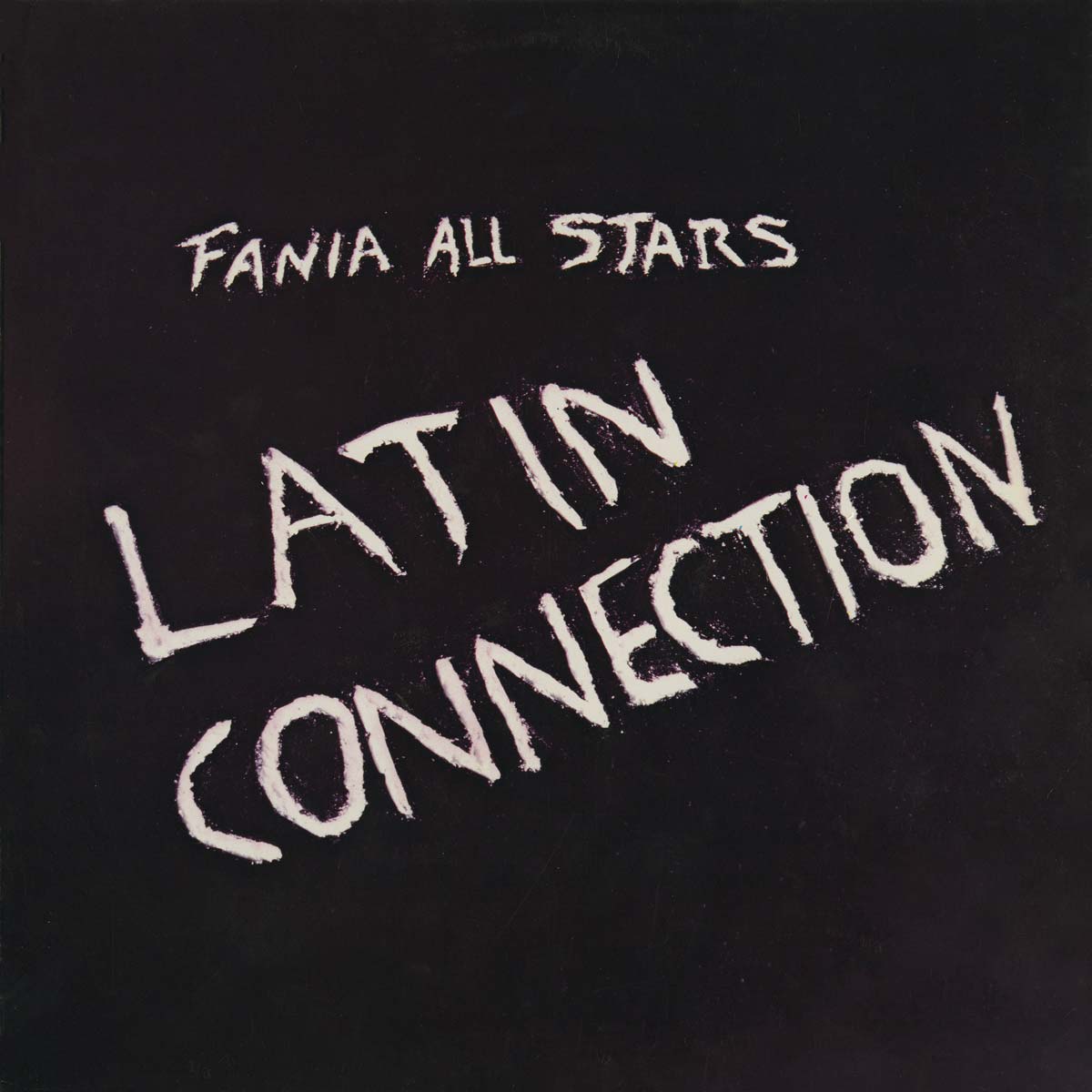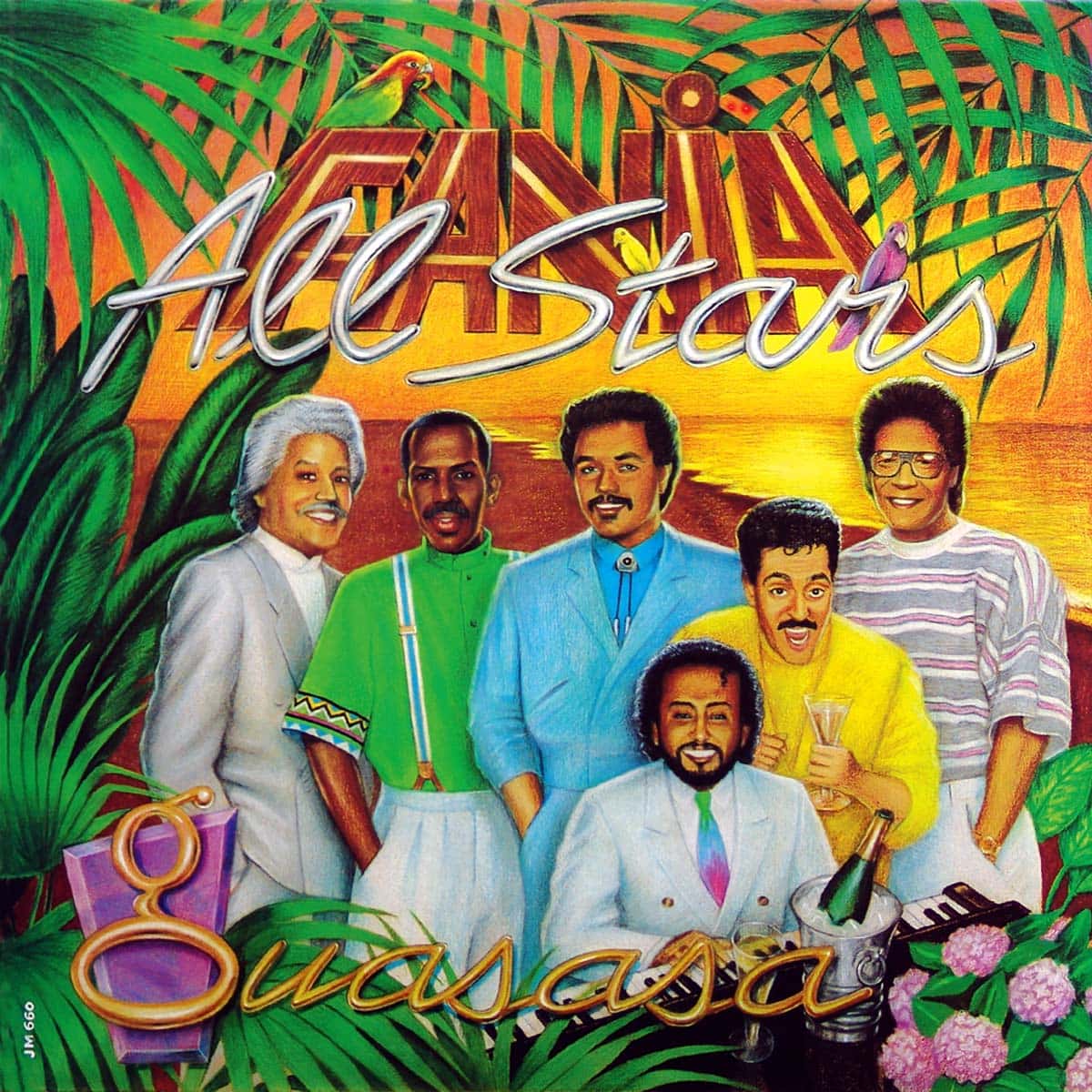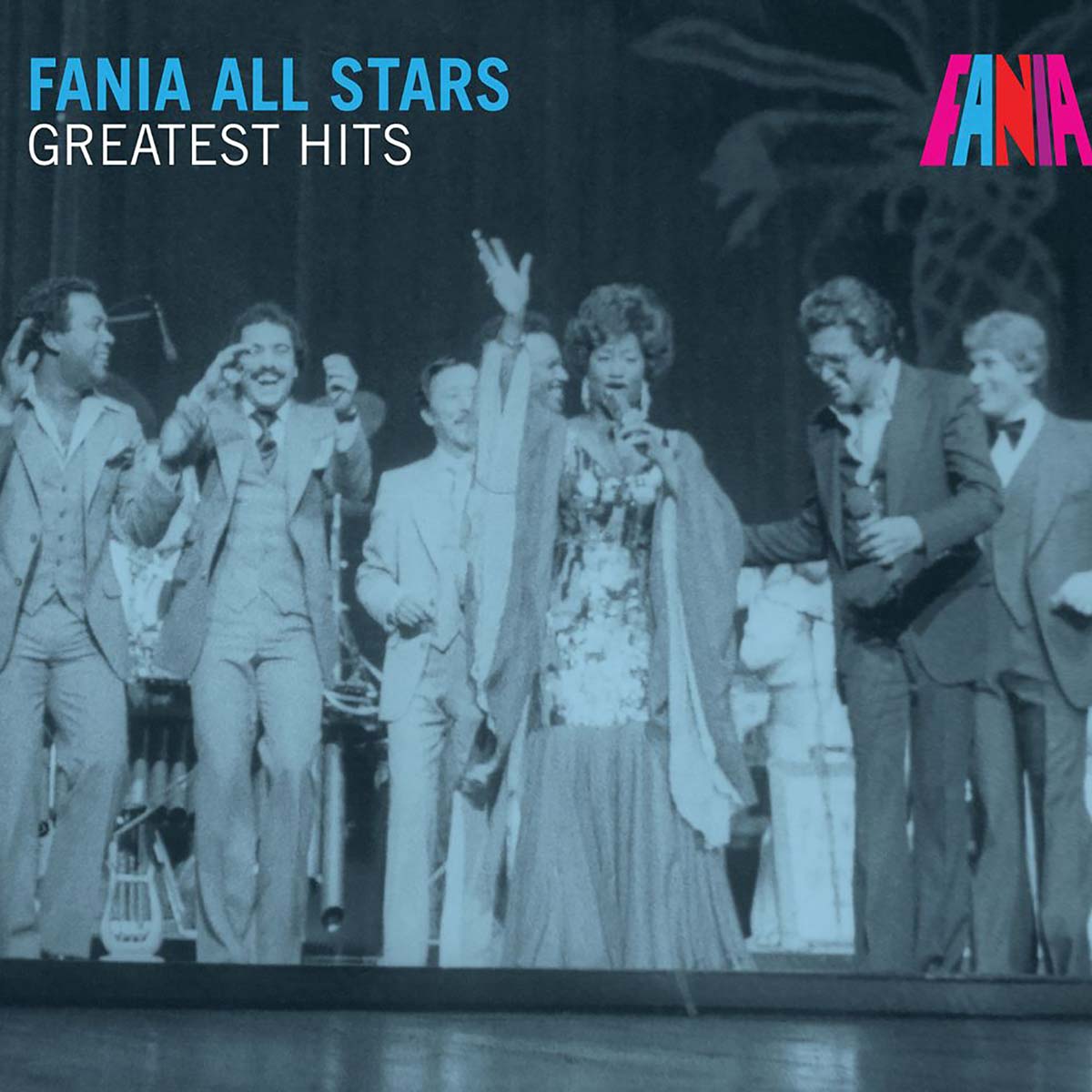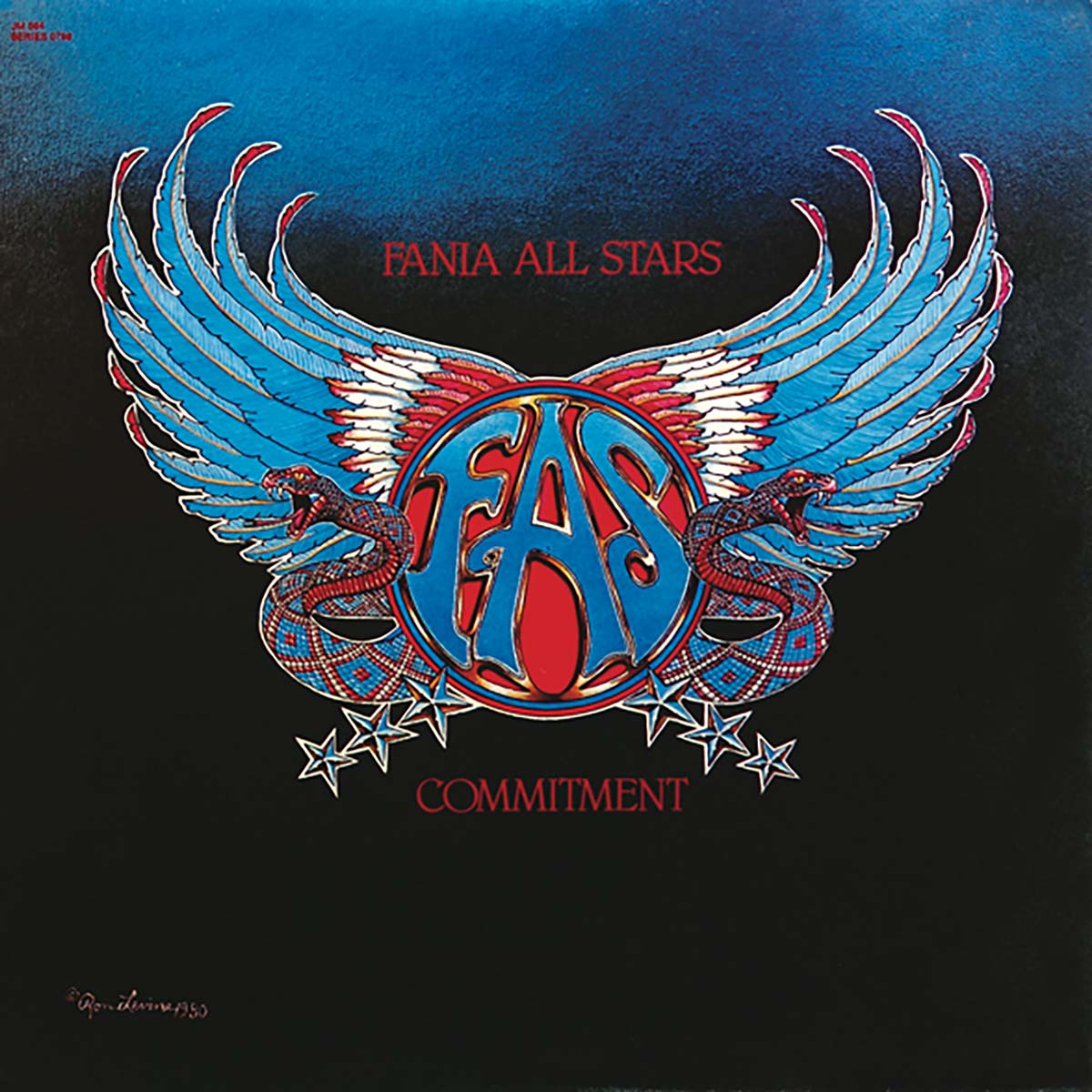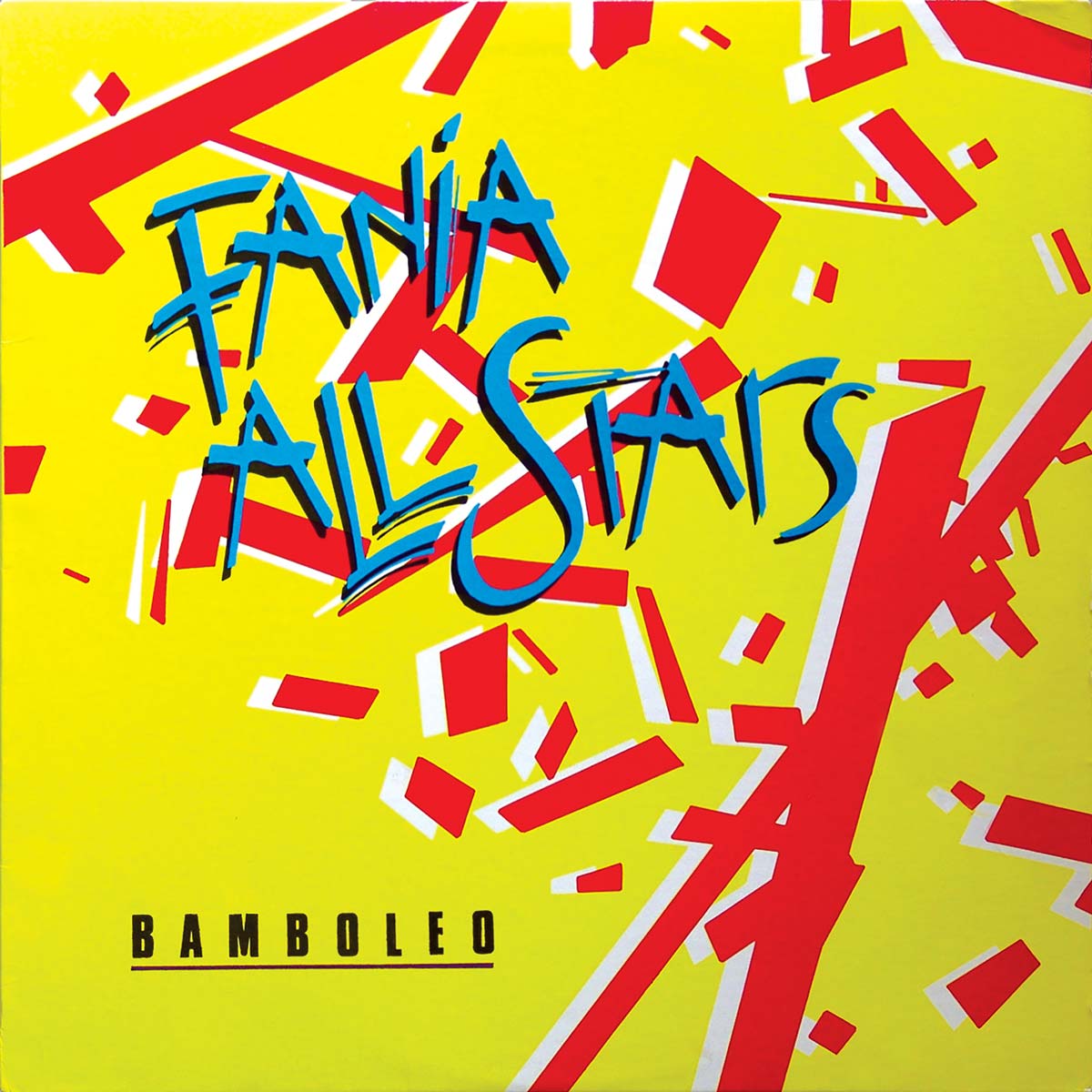
The Fania All Stars, the house band of Fania Records, comprised of the label’s bandleaders, top sidemen and vocalists, and whose history represented the rise and promulgation of salsa as a marketing tag for Latin music, had their relatively humble beginnings at the Red Garter club in New York’s Greenwich Village in 1968.
The band’s Monday night performance with invited guests in front of an audience of 800 people was recorded and issued as Live At The Red Garter Vols. 1 & 2. “The albums sales were not too spectacular,” admitted Fania co-founder Jerry Masucci (1934-1997). Masucci decided to film the band’s second concert, which took place in 1971 in front of 4,000 people – twice the capacity of New York’s Cheetah club where it was staged! The results were captured on the two-volume album Live At The Cheetah (1971), which became the biggest selling live Latin recording up to that point, and the 1972 movie Our Latin Thing (Nuestra Cosa), – prominently featuring clips from the Cheetah concert – started opening doors overseas. In 1973 Masucci took the risk of booking New York’s massive Yankee Stadium for a salsa concert headlined by the Fania All Stars.
Before the event, Masucci ambitiously predicted: “This concert will revolutionize the music business like the Beatles in the early ’60s and Woodstock in ‘69.” His gamble paid off, because the event attracted a crowd of about 45,000. The following year the band debuted in San Juan, Puerto Rico, opening the new Roberto Clemente Coliseum, and toured Venezuela, Dominican Republic, Panama and Mexico. Material from the Yankee Stadium and Roberto Clemente Coliseum concerts were issued in the album Latin-Soul-Rock (1974) and in two volumes of Live At Yankee Stadium (1975). Clips from these concerts were also included in Masucci’s movie production Salsa (1976). The highlight of 1974 was the band’s performance in front of 80,000 fans at the Stadu du Hai, Kinshasa, Zaire, as part of the entertainment before the Mohammed Ali / George Foreman heavyweight title fight, the legendary “Rumble In The Jungle”. Leon Gast, director of Our Latin Thing and Salsa, was hired to film the band in Zaire, the result being Live In Africa (1974). The mid-1970s were a pivotal period in relation to Masucci’s pursuit of a wider market for salsa: he made deals with Island Records in the UK (resulting in the release of a compilation and two Fania All Stars albums) and Columbia in the USA (for a series of crossover-oriented albums by the Fania All Stars).
1976 was also the year the All Stars performed in Europe, notably at the MIDEM festival in Cannes, France, and London’s Lyceum Ballroom, and in Japan. “We were in Japan about a week,” recalls trombonist and violinist Lewis Kahn, “and performed at least twice. I was really amazed how much the Japanese loved and embraced the music. Shortly after we started to play, they were on their feet waving their arms.” In 1986 Fania Records issued two collectors’ albums, Fania All Stars Live In Japan 1976 and Live In Africa. While Live In Japan reprises numbers from the band’s earlier live albums, namely, “Descarga Fania” and “Quítate Tú” (both from Live At The Cheetah Vol. 1; the latter was also a one of the hits spawned by Our Latin Thing), “Ponte Duro” (from Live At The Cheetah Vol. 2; later recorded by Roberto Roena for his 1973 Apollo Sound 5 album on International Records), “El Ratón” (from Latin-Soul-Rock) and “Mi Debilidad” (from Live At Yankee Stadium Vol. 2; subsequently a solo hit for Ismael Quintana from his 1974 debut album on Vaya Records), it includes three songs not previously issued in a live form by the All Stars. These are “Lamento De Un Guajiro”, originally sung by its composer Ismael Miranda with Orchestra Harlow in a block party scene in Our Latin Thing, “Mambo Mongo”, a hit from Mongo Santamaría’s Grammy-nominated album Afro-Indio (Vaya, 1975), and the Tito Puente classic “Picadillo”. The All Stars’ studio version of the latter was included in Delicate & Jumpy (Columbia / Island, 1976), a collaboration with British rock star Steve Winwood.
Live In Japan has been criticized for its audio quality and editing, nevertheless it documents an important landmark in the history of salsa’s most famous supergroup. Written by John Child, contributor to Descarga.com 1. Descarga Fania All Stars Vocals: Ismael Quintana; Bass solo: Bobby Valentín 2. Lamento De Un Guajiro Vocals: Ismael Miranda; Flute solo: Johnny Pacheco; Violin solo: Pupi Legarreta 3. Mambo Mongo Fender Rhodes Electric Piano solo: Larry Harlow; Conga solo: Mongo Santamaría 4. Picadillo Piano solo: Larry Harlow; Cuatro solo: Yomo Toro; Trumpet solo: Luis “Perico” Ortiz 5. El Ratón Vocals: Cheo Feliciano; Trombone solo: Reinaldo Jorge 6. Mi Debilidad Vocals: Ismael Quintana; Piano solo: Larry Harlow; Trumpet solo: Héctor “Bomberito” Zarzuela 7. Quítate Tú Vocals: Ismael Miranda, Cheo Feliciano, Santo Colón and Ismael Quintana; Cuatro solo: Yomo Toro 8. Ponte Duro Bongo solo: Roberto Roena Musicians: Johnny Pacheco – Musical Director / Flute Bobby Valentín – Bass Larry Harlow – Keyboards Mongo Santamaría – Conga Roberto Roena – Bongo Luis “Perico” Ortiz and Héctor “Bomberito” Zarzuela – Trumpets Reinaldo Jorge – Trombone Lewis Kahn – Trombone / Violin Pupi Legarreta – Violin Yomo Toro – Cuatro Ismael Quintana, Ismael Miranda, Cheo Feliciano and Santo Colón – Singers Arrangements: Descarga Fania – Ray Barretto and Louie Cruz Mambo Mongo – William Allen Picadillo – horns arranged by George Annis El Ratón and Mi Debilidad – Bobby Valentín Quítate Tú and Ponte Duro – Johnny Pacheco and Bobby Valentín


